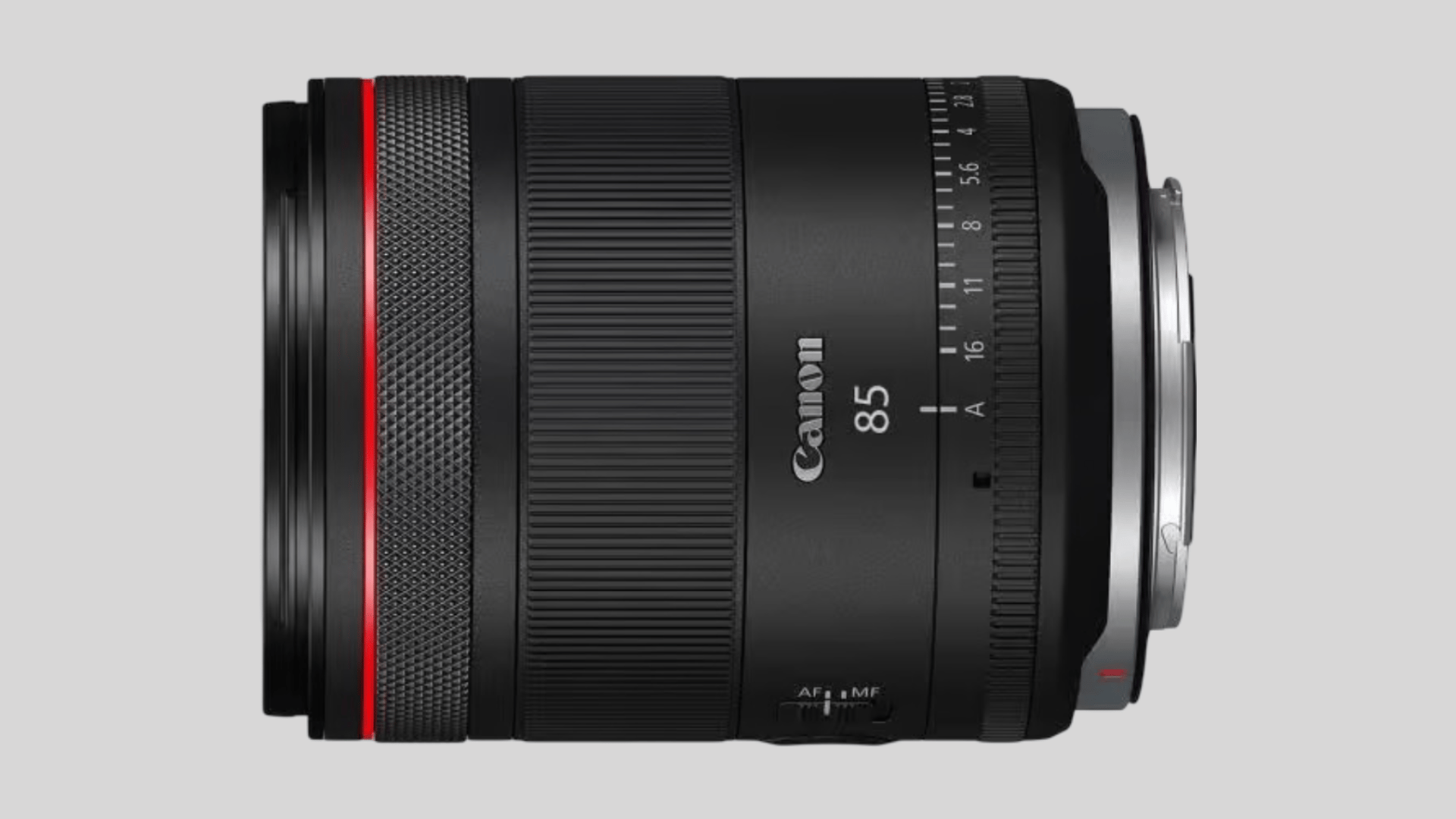📸 The Magazine For Photographers - Bite Size
Read the Latest Photography News and Updates in the Creative Industry in 3-4 minutes or less ;)

Important note: All photography articles are NOT sponsored
The Latest News:
New Canon RF 85mm f/1.4L VCM Rumours

credits: Canon
Canon is reportedly expanding its growing VCM prime lens lineup with a new RF 85mm f/1.4L, which would become the fifth entry in the series after the 20mm, 24mm, 35mm, and 50mm f/1.4 lenses. The VCM series (short for Voice Coil Motor) has gained attention for blending compact design with high-end optics, and this 85mm addition rounds out a versatile set of fast primes for both photographers and videographers.
The new 85mm is expected to match the physical size of the other VCM lenses, with a compact 76.5 x 99.3mm design and a weight likely around 550-580 grams. That would make it dramatically lighter than Canon’s RF 85mm f/1.2L USM, which tips the scales at nearly 1.2kg. The smaller footprint is possible because Canon skips optical image stabilization and uses a more efficient VCM focusing system. Like the rest of the VCM line, the lens is also expected to include an aperture ring for manual exposure control, though full compatibility is currently limited to newer bodies like the EOS R5 Mark II and upcoming R1.
An 85mm f/1.4 in this form factor could be really coll. The focal length is a favourite for portraits, offering flattering compression and shallow depth of field, but it’s also useful for everything from street photography to events and product work. While Canon hasn’t officially confirmed it yet, the pace of recent VCM releases suggests we might not have to wait long.
You can see full details on Canon-rumour’s website here
A New DJI Alternative For Creatives?

credits: Insta360
Antigravity is the name of a new drone company spun out of Insta360, and while they haven’t released a product yet, they’re already making some pretty bold claims. Their first drone, coming later this year. will be ultra-light (under 249g), shoot 8K in full 360 degrees, and, according to the company, completely change how we think about flying cameras. It’s clearly aimed at photographers, videographers and storytellers more than technical drone pilots, with a focus on ease of use and ‘‘emotional storytelling’’ as antigravity puts it.
From the language in the announcement, it’s obvious that Antigravity is trying to position itself as a creative-focused alternative to DJI. Instead of talking about flight speeds or obstacle sensors, they’re leaning into the idea that most drones today are tools, and they want theirs to be something more intuitive and expressive. They claim their drone will require zero prior experience and will simplify complex controls so anyone can pick it up and start shooting immersive content right away. There’s also talk of “world-firsts” in drone design and safety features to prevent misuse, but we’ll have to wait and see what that really means.
What’s interesting is how much of this sounds like a direct shot at DJI’s dominance, especially with creators and FPV fans. The mention of “immersion” hints at possible VR or headset integration, and the fact that they’re using Insta360 tech means they’re coming in strong on the camera side. The full reveal is expected in August.
You can read full details on Insta360’s blog here
Something Worth Checking Out
This Tiny Hearing Aid Is Changing Lives—And It’s Under $100
Big companies charge THOUSANDS for hearing aids—but guess what? You don’t have to pay that much.
Oricle Hearing gives you crystal-clear sound, wireless charging, and all-day battery life for under $100. No doctor visits, no crazy prices—just amazing hearing at an unbeatable deal.
Over 150,000 happy customers are already loving their new way of hearing. Don’t let overpriced hearing aids hold you back—order yours today.
Weekly Photo Technique Exploration
Welcome to a new section of the magazine where every week we will explore a new photography technique from across various photography genres.
This week’s technique: Tilt Shift Photography

credits: Adobe
What Is Tilt-Shift Photography?
Tilt-shift photography is a technique that looks very technical (and it kind of is), but it opens the door to some really fun and surreal effects, like turning a real-life city into what looks like a miniature toy town.
Originally, tilt-shift lenses were made for correcting perspective distortion, especially in architecture (keeping tall buildings from leaning backward). But creatively, photographers use the lens’ unique movement to mess with focus planes and create selective blur. That’s how you get that miniature effect.
What Does a Tilt-Shift Lens Actually Do?
A tilt-shift lens physically moves on two axes:
Tilt shifts the focus plane. Normally, focus falls parallel to your sensor. Tilt it, and the focus plane rotates. You can get a thin line of sharpness running diagonally or even horizontally through your image.
Shift moves the lens side to side or up/down, which changes how the image projects onto the sensor. This is what helps straighten out converging lines in architecture photography.
You can use either tilt or shift (or both together) to manipulate depth of field, perspective, or both at the same time.
The Famous “Miniature” Look
By narrowing your focus plane (and keeping it selective), you trick the eye into thinking it’s looking at a macro scene. Add a high vantage point, a wide view, and some saturated colours, and the illusion is just great.
It works best when you're:
Shooting from above
Using a wide aperture
Composing a scene with small subjects (cars, people, buildings)
The blur at the top and bottom of the frame tells your brain: ok, this must be a model
How to Shoot Tilt-Shift
1. Use a Tilt-Shift Lens
These are specialty lenses. Canon, Nikon, Sony, and others all make them. They're not cheap, but you can also rent one if you want to try before buying.
2. Compose from Above
If you’re doing the miniature look, find a high angle, like a rooftop, balcony etc.. Cities, roads, parks, or construction sites all work as subjects.
3. Set Aperture Wide Open
You want shallow depth of field. Set your aperture around f/2.8 to f/4 to exaggerate the blur.
4. Tilt the Lens
Carefully tilt the lens downward or upward (depending on your camera/lens orientation) and watch the blur start to come in from the top and bottom. The more you tilt, the more extreme the effect becomes.
5. Fine-Tune Focus
Manual focus is your friend here. Focus on your "sweet spot" and let the rest naturally blur out.
Can You Fake It?
Yes! If you don’t have a tilt-shift lens (or you simply don’t want to buy one), you can simulate the effect in post processing.
In Photoshop:
Open your photo (taken from a high angle).
Duplicate the layer and go to Filter > Blur Gallery > Tilt-Shift.
Adjust the blur lines and strength to control the in-focus strip and the blur above/below it.
Boost contrast and saturation a bit to enhance the “model” feel.
Yes, it’s not exactly the same, but it’s close and great for experimenting.
Download The World’s BEST Lightroom Presets



